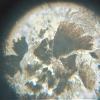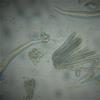
09-01-2026 17:41
Arnold BüschlenHallo, F. dilatata wird von vielen Bryoparasiten

10-01-2026 20:00
Tom SchrierHi all,We found picnidia on Protoparmeliopsis mur

07-01-2026 22:22
 Danny Newman
Danny Newman
Tatraea sp. on indet. hardwood The Swag, Great Sm

10-01-2026 01:18
 Danny Newman
Danny Newman
cf. Neovaginatispora fuckelii on indet. shrub Pre

07-01-2026 10:24
 Danny Newman
Danny Newman
Pezicula sp. on indet. hardwood Appalachian Highl

09-01-2026 10:08
 Blasco Rafael
Blasco Rafael
Hola, en el mismo habitat que la anteriorRetamaDia

08-01-2026 21:22
 Blasco Rafael
Blasco Rafael
Hola, He recogido esta muestra de Orbilia sobre Re

07-01-2026 17:29
 Marc Detollenaere
Marc Detollenaere
Dear Forum,On a barkless Populus I found some smal

10-11-2021 17:33
 Riet van Oosten
Riet van Oosten
Add-on topic http://www.ascofrance.com/forum/7059

07-01-2026 10:05
 Danny Newman
Danny Newman
cf. Chaetospermum on XylariaCosby Campground, Grea
I need some help here because I just don't know where to begin...
Ascomata ±102, dried, collected some months ago, almost one year.
Spores 27.8-35.2 x 5-6.5
Me 31.9x5.7 4(?)-7 septate
Ascus 115.6x17.76
Paraphyses filiform some with slightly enlarged tips
Thank you,
Elsa

Which country did you collect it?
I was afraid somebody would ask me for iodine reaction...Mine finished, so... I could try with 2 options, iodopovidona 10% iodine, or one solution with 6 g iodine + 2g potassium iodide + etanol 70º /100ml. What do you think is the best?
About the collect: here in Portugal Braga. Wet place, inner bark of populus (fallen).
Elsa

I missed up all these...I was trying to spare the apos and choose another which were close. I thought they were the same, a bit more dried. So, I'm going to correct the macro photos, and add the blue tip of iodine reaction. Later I think about the other, definitely completely different.
Elsa

Sorry for my ignorance, but should dead material have still complete spores inside asci?
Thank you,
Elsa

Thank you for your patience. After some search, I think this is Durella connivens.
https://www.asturnatura.com/fotografia/setas-hongos/durella-connivens-fr-rehm-2/2493.html
Do you agree?


The conidia in your last picture belong to a hypho, I suppose Cryptocoryneum.
Now I have that doubt too. Maybe what I saw isn't a blue reaction, because the second photo already shows a dark zone on ascus apex without iodine, just water.

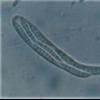
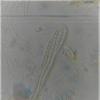
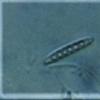
 iodine reaction
iodine reaction